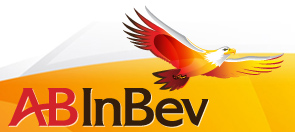 Talk about bigger is better. Well, at least on paper.
Talk about bigger is better. Well, at least on paper.
Anheuser-Busch InBev Tuesday agreed to buy its main rival SABMiller for $104 billion, creating the world’s largest beer company with sales of $55 billion.
The deal comes on the heels of Dell announcing that it bought EMC Corp. for $67 billion.
AB InBev will offer most SABMiller shareholders $67.59 per share for the maker of Miller Lite, Pilsner Urquell and Peroni, a premium of roughly 50% over the share price before acquisition rumors started flying, per CNNMoney.com.
The deal, which has to pass regulatory muster, would create world's largest beermaker, with nine of the world's top 20 beers by volume.
Brunswick Group is handling the media for Anheuser-Busch InBev's takeover bid. Finsbury counsels SABMiller.
With mergers and acquisitions fever starting to grip a growing number of markets, senior PR executives—regardless of the space they’re in—need to think about what role they could play should their company become a buyer (or seller).
|
|
With that in mind, O’Dwyer.com asked Rob Berick, senior VP and managing director at Falls Communications, for a few M&A pointers catering to PR pros.
• Do not get ahead of the deal. With all the momentum and adrenaline that builds up in advance of announcing a significant transaction, it is important to remember that there are still several important steps that need to be successfully completed before the deal is completed. And these steps might take weeks, if not months, to complete. Therefore, it is critical to establish the proper cadence and message sequence to ensure your communications strategy aligns with your business strategy.
• Focus on “NewCo.” While it is tempting to celebrate the many significant accomplishments that both companies have achieved throughout the years, the real story is what combined entities can achieve together that was not possible independent from one another. Placing the focus on the new entity will create clear sightlines to the deal’s strategic rationale for all stakeholders.
• Take care of your internal audiences. Every transaction brings some level of uncertainty, particularly for associates. Whether it is questions about new healthcare coverage or concerns about workforce reductions, news of the deal will have a swift and immediate affect on associates. While you may not have the answers to the questions being asked on Day One, it is important to engage employees, as they will be critical to the new entity’s ability to be successful.



 Spectrum Science acquires clinical trial recruitment and engagement solutions provider Continuum Clinical.
Spectrum Science acquires clinical trial recruitment and engagement solutions provider Continuum Clinical. How PR agency owners can navigate the M&A process in a way that yields a rewarding experience for both owners and the teams they leave behind.
How PR agency owners can navigate the M&A process in a way that yields a rewarding experience for both owners and the teams they leave behind. Ten potential ways an agency sale can positively benefit team members and employees.
Ten potential ways an agency sale can positively benefit team members and employees. Kekst CNC reps Palladium Equity Partners and its joint venture affiliate, Palladium Heritage, on the acquisition of National Auto Parts, USA;, NAP San Diego; and National Auto Parts-Oakland to form Collision Auto Parts, a platform serving customers in the automotive aftermarket collision repair sector.
Kekst CNC reps Palladium Equity Partners and its joint venture affiliate, Palladium Heritage, on the acquisition of National Auto Parts, USA;, NAP San Diego; and National Auto Parts-Oakland to form Collision Auto Parts, a platform serving customers in the automotive aftermarket collision repair sector. ICR has acquired Bullfrog + Baum, the 23-year-old PR shop focused on the hospitality, lifestyle, travel and consumer marketing sectors.
ICR has acquired Bullfrog + Baum, the 23-year-old PR shop focused on the hospitality, lifestyle, travel and consumer marketing sectors.


 Have a comment? Send it to
Have a comment? Send it to 
No comments have been submitted for this story yet.